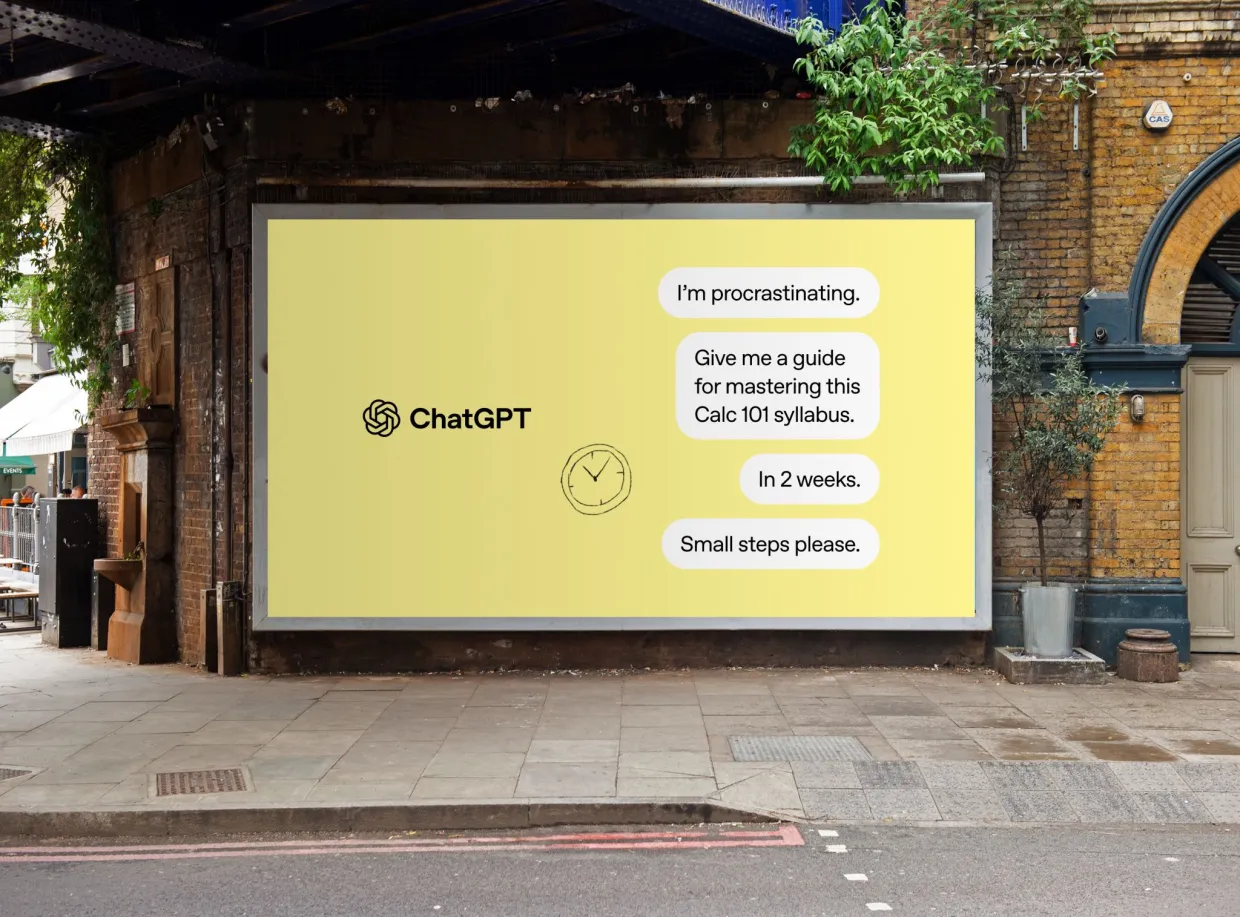Vast Counsel
October 9, 2025
OpenAI : Crafting a Disruptive Marketing Playbook in the AI Era

When OpenAI proclaims "AI for everyone," it's not just a tagline. It's a bold redefinition of what artificial intelligence can be; accessible tools addressing diverse needs from casual queries to enterprise solutions.
Founded in 2015 as a nonprofit to advance AGI for humanity's benefit, OpenAI pivoted to a capped-profit model in 2019, forging partnerships like Microsoft's $13B+ investment and scaling from viral hits like ChatGPT to APIs for developers. Amid the AI boom, they emphasized flexibility, making AI conversational and adaptable while rivals siloed features.
By 2025, OpenAI reached a $500B valuation after a $6.6B share sale, powering tools for 800M+ weekly users across over 180 countries. How did they build this brand?
- The Identity Bet: Invented, Not Inherited
The Calculated Craft of a New Name
Elon Musk conceived "OpenAI" in 2015, drawing from emails emphasizing open-source roots and accessibility. It's pronounceable, searchable, and embodies democratizing AI. This defies norms, creating a blank canvas for their vision.
- Google: Multicolor, playful icons for broad appeal
- Anthropic: Purple tones signaling safety
- xAI: Stark black for truth-seeking
This palette infuses elements like homepage quotes and diagrams, ensuring consistency.
OpenAI : Not a Legacy Force
Google's search roots contrast with OpenAI's chat interfaces.
- Google → Data-heavy search tool
- OpenAI → Sleek collaborator for natural interaction
Humanization extends to features:
- Models: Custom blocks like GPT or DALL-E
- Attributes: Natural language with AI smarts
- Compare: Google's Gemini vs. Anthropic's Claude
OpenAI positions users as creators: "You shape AI."
For breadth, consider DALL-E's image generation, serving creative needs from artists to marketers, with billions of images created overall.
- The Flexible Challenger Strategy: Turning Research into Strength
ChatGPT's 2022 public launch flipped years of stealth into advantage: AI that adapts instantly.
As Google layered features (Gemini integrations), OpenAI targeted complexity pains with design-first platforms.
Commitment shows in:
- UI progressive disclosure via queries
- Real-time input sync
- Custom models without experts
"Flexible-first" blends branding and tech.
Building in Public as a Beacon, contrast styles:
Sundar Pichai (Google):
- Keynotes with bold claims
- Ubiquitous ads
Sam Altman (OpenAI):
- X threads on updates
- Developer events
- Measured reveals (e.g., 2025 funding)
This deliberate flywheel iterates publicly, boosting accessibility.
- Moment of Truth: Everyday Ads vs. Developer Conferences
Two Philosophies.
Google I/O:
- Keynote boasts, ecosystem flex
- Live demos, coverage
ChatGPT Campaign (September 2025):
- Cinematic ads on everyday AI enhancements like cooking or learning
- Visionary manifesto, no specs
- Multichannel: TV/social, focusing on personal experiences
Scale (Google) vs. Vision (OpenAI).
Magic of Free Access
2025's expanded free tiers (e.g., GPT-4o access) spark virality: instant "wow" shares, barrier-free onboarding, reinforcing "AI for everyone."
For breadth, the API's 4M+ developers integrate AI into apps, from coding assistants to custom bots, proving enterprise versatility.
- What Works, Challenges, and Strategic Lessons
Branding Successes:
- Unified Design: Gradients, intuitive animations foster flow-state.
- Pedagogical Onboarding: Clear demos, transparent pricing (free to enterprise).
- Memorable Character: Intuitive "open" flows build loyalty.
Challenges:
- Shadowed by Giants: Despite praise, Google Gemini captures markets via Android integration; Anthropic raised $13B in 2025 for safety-focused models, overtaking in enterprise usage.
- Integration Reliance: Microsoft ties blur lines; xAI's Grok-4 (July 2025) pushes independent "truth-seeking," eroding niche share.
- Hype vs. Reality: GPT-5 excels in reasoning, but Gemini 2.5 edges in math/science benchmarks, risking churn.
Differentiation Through Delight: Disrupt via user focus, not features.
Naming as Canvas: Root identity in story-fuel.
Openness Signature: Public builds match "everyone" ethos.
Product as Branding: Free tiers, models fuse marketing; every interaction counts.
In October 2025, AI agents evolve, OpenAI's valuation fuels resilience amid hallucinations/privacy scrutiny and rivals like Anthropic's ethics edge, xAI's iterations, Gemini's dominance.
Conclusion : Branding in Commoditization Era
AIs converge on smarts. OpenAI grasped this early, remaining "open AI." Magic must evolve. What in 2027 keeps it flexible ?